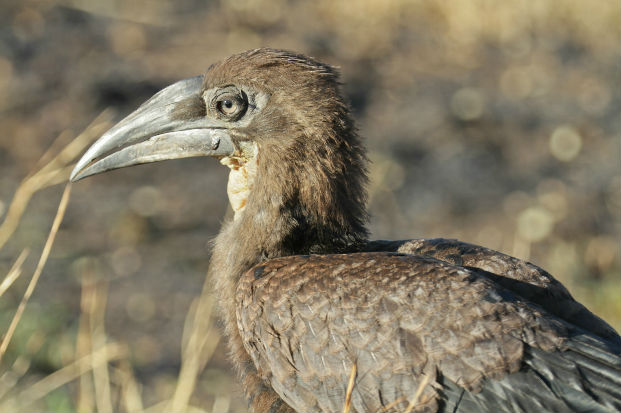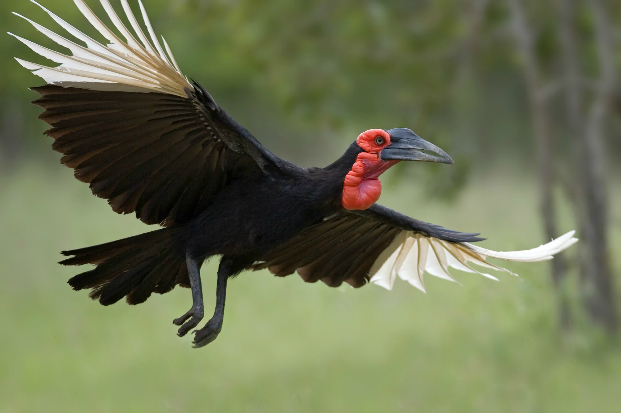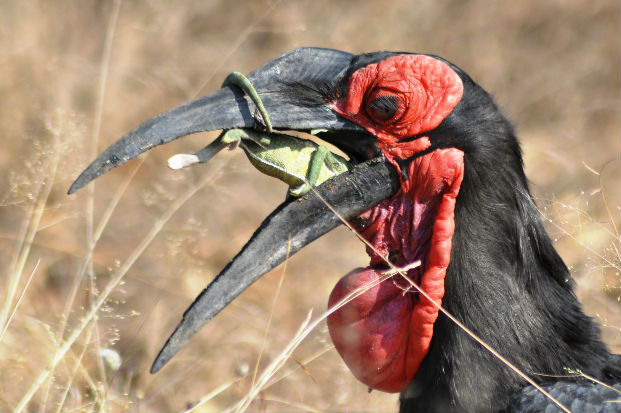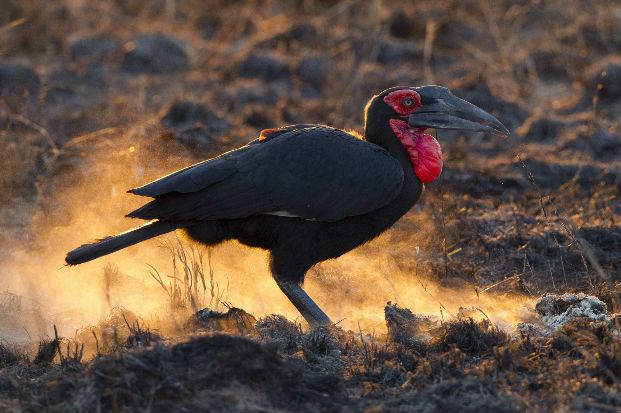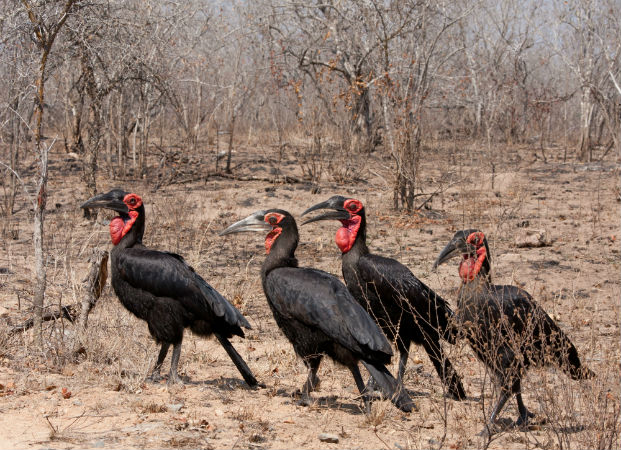The southern ground-hornbill is a very large black bird with a conspicuous red face, a long decurved bill and an impressive set of eye lashes. The latter being most unusual in a bird. It can be seen strutting around the savanna and woodland as if it is walking on its tiptoes. They live in small family groups of 3 to 5 birds defending a territory of 100 hectares. It is a long lived bird, in captivity they have been known to reach 70 years old.
Vote for the fact you find most fascinating
Southern ground-hornbills have been persecuted for breaking windows by hammering on them with their powerful bills. This act of territorial aggression is caused by their own reflection.
Whilst two eggs are laid by the southern ground-hornbill generally only one chick survives. The chick hatching second is out competed for food and usually starves within a week. This second egg is sometimes removed by conservationists and reared by hand.
The call of the southern ground-hornbill can be heard over 3km away. They amplify their voice by inflating the red balloon-like wattle that hangs below their bill.
A foraging party of ground-hornbills will snap up most things in their path such as snakes, rodents, small birds, eggs, chameleons and tortoises. The latter they will break open with their strong beaks.
Birds such as carmine bee-eaters follow groups of southern ground hornbills to catch the insects which fly up out of the grass as they walk through it.
The southern ground-hornbill has a poor breeding record. A group will only fledge one chick every 9 years.
Traditionally it was believed to be a taboo to kill a southern ground-hornbill as they were considered sacred as bringers of rain. The only way to appease the gods was to sacrifice a calf.
Each morning the dominant pair of southern ground hornbills call in duet to advertise ownership of their territory. They are joined by others in the group, males calling with males and females calling with females.




